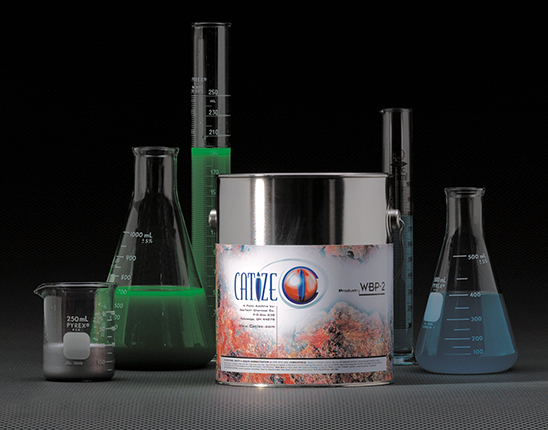Papering Over Corrosion
NASA has yet to find the fountain of youth, but its research has created a new product that will extend the operating lives for an unlimited number of items. A licensing agreement between Kennedy Space Center and GeoTech Chemical Company of Tallmadge, Ohio, has allowed GeoTech to commercialize a patented technique for producing superior corrosion control coatings.
GeoTech's corrosion control system, marketed under the Catize® name, uses ligno sulfonic acid doped polyaniline (Ligno-Pani) as the key component. Ligno-Pani is an inherently conductive polymer (ICP) also known as a synthetic metal. GeoTech is offering products to the coatings industry in the form of an additive to provide more coatings with enhanced protection capabilities.
Kennedy has been researching corrosion inhibitors for many years. Florida, especially the coastal region where Kennedy is located, is one of the most corrosive areas in the world due to the ocean's salt spray and its damp, humid climate. In addition, each time the Space Shuttle is launched, 13 tons of hydrochloric acid is generated, corroding the launch pad. Existing zinc-based paints are ineffective because the hydrochloric acid dissolves the zinc protective coating.
The technique licensed to GeoTech has several advantages over other existing methods for producing electrically conducting polymers. Developed at the University of Arkansas at Little Rock through funding from Kennedy, the method increases the solubility of the polymers. The processing method uses lignosulfates (papermaking byproducts), making it inexpensive and environmentally safe. The lignosulfaic acid also helps improve the solubility of polyaniline, the electrically conducting polymer used in the process.
The properties exhibited by Ligno-Pani create the potential for use of the coating in a wide array of applications. One example of the benefits of Catize is in corrosion protection for steel bridges. A typical steel bridge requires a three-coat system to adequately protect the structure. However, when a break occurs in the coating, corrosion begins to break down the exposed area as well as the entire steel substrate. Catize focuses the corrosion at the break and prolongs the migration process of corrosion to allow the steel substrate to remain intact. The result is years of extended service of the bridge before repairs or maintenance are required.
Ligno-Pani can also be used as a coating for cotton and polyester clothing to eliminate the potential for sparking in hazardous atmospheres, such as clean rooms. It can also be used on electronics to provide electromagnetic interference (EMI) shielding for computers to ensure safety and security. In addition, the cost of producing circuit boards is reduced when using the polymers in photolithography processes.
There are a number of other potential applications for Ligno-Pani polymers that have yet to be fully explored. The polymers may be used in conductive inks, pH and moisture sensors, stealth technology (radar invisible coatings), high temperature adhesives, and electrostatic dissipation in packaging. GeoTech hopes to eventually see Ligno-Pani being used to improve many household items such as computers, televisions, and cellular phones by making them lighter, smaller, and more powerful.
Catize® is a trademark of GeoTech Chemical Company.

Using synthetic metal, GeoTech has developed Catize,® a new corrosion control additive for use in protective coatings.













